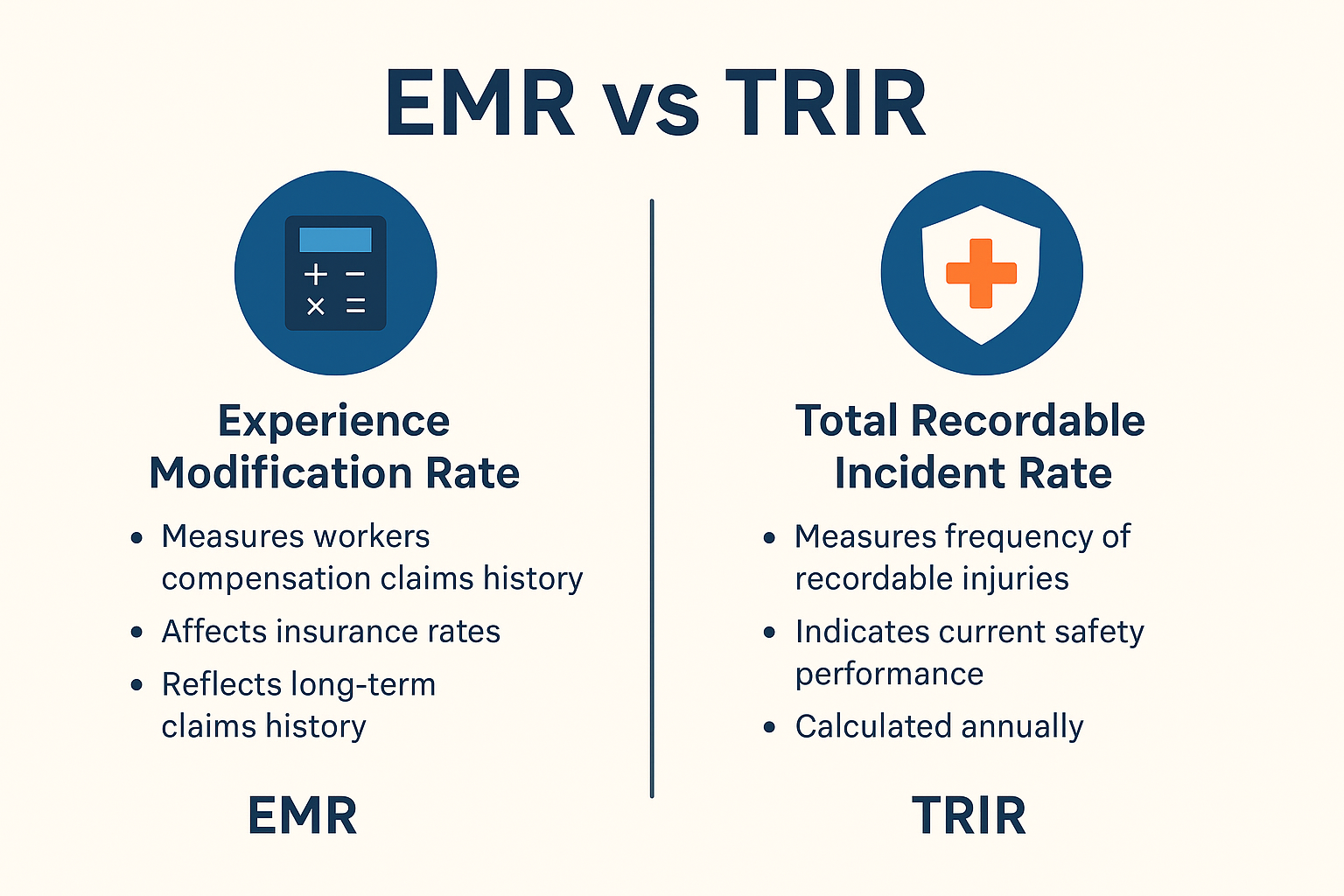If your job sites rely on third-party workers or vendors, contractor safety is an absolute must. This is because one incident involving a contractor can damage your safety record, stall a project, or trigger costly regulatory penalties.
That’s where a contractor safety management system becomes important.
Unlike general safety tools designed for full-time employees, this system focuses on the unique risks, roles, and responsibilities that come with managing contractor safety. And it helps you stay ahead of compliance issues, protect your workforce, and reduce potential risks.
Interested in adopting one? Let’s talk about everything you need to know about that in this guide.
What Is a Contractor Safety Management System?
When you bring contractors onto a job site, you’re not just hiring help, but also taking on risk. A contractor safety management system is how smart companies make sure those risks don’t turn into real problems.
This system helps you manage every part of the contractor relationship through a safety-first lens. That includes checking qualifications, assigning safety training, tracking compliance, and making sure contractors follow your safety protocols, not just their own.
Why Contractor Safety Management Matters
Contractors often move between job sites, work under different rules, and may not be fully aligned with your safety procedures. So, without a system in place, it’s easy for contractors to miss safety requirements, skip training, or fall short on compliance.
A strong contractor safety management program makes sure every contractor you hire meets the qualifications required, understands your safety protocols, and follows through. It also helps minimize potential risks to your team, your site, and your reputation.
Contractor Safety Management System vs In-House Safety Program
Unlike your in-house safety program, a contractor safety management system is built specifically for contractor safety, so it focuses on things like:
- Pre-qualifying contractors before they step on site
- Running job-specific risk assessments
- Monitoring contractor safety performance over time
- Managing incidents involving contractors
- Keeping everything aligned with the Occupational Safety and Health Administration (OSHA) standards and regulatory requirements
5 Key Components of an Effective Contractor Safety Management System
An effective contractor safety management system is more than just a checklist. It’s a structured framework that typically features these five key components:
1. Contractor Pre-Qualification
Before any work begins, it’s important to verify that contractors meet the necessary safety, health, and regulatory requirements.
This stage involves reviewing required qualifications, previous safety performance, and compliance history.
2. Clear Safety Expectations and Contract Terms
Contractor agreements should outline all safety protocols, reporting expectations, and training requirements.
These terms establish that contractors understand the safety standards they must follow and help avoid misunderstandings that can lead to non-compliance or safety incidents.
3. Training and Orientation
Contractors should complete site-specific safety training and orientation before starting work.
A solid contractor safety management program teaches all personnel what job-specific risks and safety procedures they need to follow, as well as how to report hazards.
4. Continuous Monitoring and Incident Management
Once contractors are on-site, real-time oversight is essential.
A contractor safety management system allows you to monitor safety performance, log near-misses or incidents, and implement corrective actions efficiently.
5. Post-Job Evaluation and Performance Reviews
After the job has been completed, you need to assess contractor performance across key areas, including incident rates, adherence to safety practices, and communication.
This feedback loop supports continuous improvement and helps you build a trusted network of safe, compliant contractors.
Best Practices for Implementing a Contractor Safety Management System
Managing contractor safety requires the right processes to support safety and compliance from the ground up.
Here’s how you can do that properly:
Establish Clear Safety Requirements Early
Before contractors arrive on-site, define your safety protocols and expectations. Your contractor safety management program should outline what training, documentation, and qualifications are required before work begins.
Use Pre-Qualification to Screen Contractors
Effective contractor safety management starts with thorough pre-qualification. Use the system to collect certifications, insurance, past safety performance, and other critical contractor information.
Make Safety Training Non-Negotiable
Contractor safety training is essential, not just a formality. Use software to assign required training based on job roles and track completion status. Also, consider offering mobile access so contract workers can complete training from anywhere.
Enable Real-Time Communication and Reporting
Give contractors the ability to report hazards or incidents using mobile devices. Real-time reporting improves incident response and encourages a more proactive safety culture. It also makes sure EHS managers are alerted immediately when safety issues arise.
Regularly Audit and Assess Contractor Performance
Set up recurring safety audits and performance reviews within the system. This helps hold contractors accountable, identify trends in safety data, and determine if additional training or corrective action is needed.
How Contractor Safety Software Helps Streamline the Process
Managing contractor safety manually can be time-consuming, error-prone, and hard to scale, especially when dealing with multiple contractors, sites, and compliance requirements.
That’s where contractor safety management software comes in. With this software, your operations can:
Simplify Pre-Qualification and Onboarding
A good contractor safety management software makes it easy to vet contractors before they arrive on-site.
It centralizes contractor information, safety records, and qualifications, helping you make sure contractors comply with your organization’s standards from day one.
Track Safety Training and Documentation
Contractor safety software helps manage safety training records, track completion, and even assign additional training as needed.
This can radically reduce the time you need to vet that everyone on site, contract workers and full-time employees alike, meets regulatory requirements and is prepared to work safely.
Enable Real-Time Monitoring
Digital tools give safety managers and EHS leaders real-time visibility into safety performance.
Whether it’s through mobile devices or dashboards, you can track incidents, log inspections, and monitor corrective actions as they happen, without relying on outdated paper forms.
Support Incident Reporting and Risk Management
Contractor safety software also improves the incident management process by allowing users to report hazards and track investigations in one centralized system.
Additionally, it helps conduct risk assessments and assign corrective actions, minimizing the chance of repeat incidents.
Improve Compliance and Accountability
With features like automated reminders, audit trails, and customizable workflows, contractor safety software aligns contractors with your safety protocols.
It also supports regulatory compliance by organizing all relevant data for audits and safety audits.
The Role of Contractor Safety Management in Overall Safety Performance
Contractor safety management isn’t just about ticking boxes. It’s a vital part of how your organization holistically manages safety performance by:
Enabling Consistent Safety Standards Across All Workers
One of the most critical functions of contractor safety management is leveling the playing field. Contractors and full-time employees often perform the same high-risk tasks, yet without a unified system, contractor safety might be compromised.
A structured program makes sure that all personnel, regardless of employment type, are held to the same safety standards, which can help minimize risks across the board.
Closing Communication Gaps That Lead to Incidents
When contractor safety isn’t integrated into your broader safety system, critical updates, like new procedures or emerging hazards, may not reach all teams.
Contractor safety management systems ensure that safety communications, job site protocols, and EHS procedures are shared in real time with everyone to reduce the chance of missteps or oversights.
Improving Oversight and Accountability
A good system enables organizations to track contractor training, monitor compliance, and log safety data, all of which improves visibility for EHS managers.
This not only helps make sure that contractors follow required protocols but also supports ongoing performance reviews and corrective actions if needed.
Supporting a Unified Safety Culture
By holding contractors to the same expectations as your core workforce, you’re reinforcing a safety-first culture.
Contractors feel more engaged and accountable, while employees see that safety isn’t optional but foundational, no matter who’s doing the work.
Strengthen Your Safety Program with EHS Momentum
Managing contractor safety shouldn’t be reactive. EHS Momentum helps you take a proactive, organized approach with the right tools and strategies.
EHS Momentum offers software solutions and expert guidance designed for companies that prioritize health and safety across all roles, whether you’re hiring contractors or managing a full-time team.
From onboarding to audits, our platform, MyMomentum, makes it easier to ensure compliance with contractors from the start.
MyMomentum: Built for Smarter Contractor Oversight
MyMomentum acts as your digital solution for contractor safety management. It helps track contractor pre-qualification, assign site-specific training, and make sure safety protocols are followed before, during, and after work begins.
With real-time visibility, customizable workflows, and built-in EHS procedures, MyMomentum empowers your team to keep both contractor and employee safety on track while helping you maintain full compliance with industry and regulatory standards.
Looking to streamline how you manage contractor safety? Schedule a demo with EHS Momentum and see how MyMomentum can support a safer, smarter workforce.
FAQs About Contractor Safety Management System
What are the 4 components of a safety management system?
The core components include safety policy, risk management, safety assurance (like audits and inspections), and safety promotion (training and communication). These form a systematic approach to protecting both contractor personnel and your own employees.
Does OSHA require a contractor safety program?
OSHA doesn’t mandate a specific program, but it does require employers to make sure contractor management practices meet regulatory standards. That includes compliance with safety procedures and training requirements.
What is a safety management system in construction?
A safety management system in construction coordinates efforts across contractor safety, training management, and incident prevention. It helps mitigate risks on job sites where multiple contractors work alongside your core workforce.
What are the 5 pillars of a safety management system?
The five pillars typically include policy, risk identification, communication, assurance, and continuous improvement. These pillars help ensure compliance, minimize risks, and promote a strong culture of health and safety across your organization.







